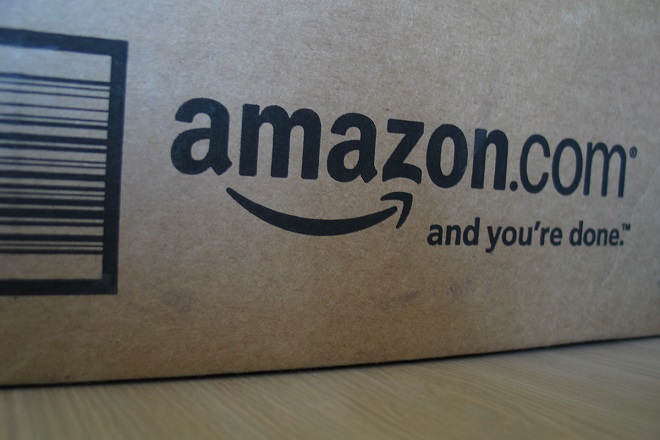EarthTalk®
From the Editors of E – The Environmental Magazine

Despite efforts by Amazon.com to achieve net zero emissions, environmentalists still have plenty of beefs with the e-tailing juggernaut. Credit: Soumit, FlickrCC
Dear EarthTalk: Is Amazon.com an environmental hero or villain? — J. West, Orange, CA
Not surprisingly, Amazon.com’s environmental performance is a mixed bag. One charge often levied by critics is that Amazon’s low pricing and expedited shipping encourages customers to spend more on more unnecessary stuff, further exacerbating our already rampant consumerism.
Likewise, critics charge that the company’s “Prime” service encourages customers to order single items that must be rush-shipped to them instead of combining multiple orders in bigger boxes, which would be more energy efficient.
Others criticize Amazon for introducing huge commercial operations into hundreds of otherwise residential and predominantly minority communities across the country. An analysis by Consumer Reports found that 69 percent of Amazon warehouses have more people of color living within a one-mile radius than the median neighborhood in their metro areas.
Residents complain of increased air pollution from the preponderance of trucks and vans going to and fro, more dangerous walking and biking conditions for neighborhood kids, traffic congestions and significant upticks in noise.
In 2019 the company’s carbon emissions were in the spotlight when hundreds of employees (“Amazon Employees for Climate Justice”) called on corporate leadership to commit to net-zero pollution by 2030. For its part, Amazon reports it is moving quickly toward net zero carbon emissions. It won’t practically be able to get there until 2040, but the company is aiming to run on 100 percent renewable energy by 2030.
Other green initiatives from the e-tailing juggernaut include a $100 million investment in nature-based climate solutions like reforestation projects, a recent purchase of 100,000 fully electric delivery vehicles, and collaborations with manufacturers to improve and reduce packaging that has led to a 27 percent reduction in packaging weight and the elimination of 810,000 tons of packaging material since 2008.
Another area where the company garners green kudos is its leadership in cloud computing. Amazon’s servers no doubt use a lot of electricity (much of which is derived from renewables nowadays), research suggests that companies who move their server infrastructure to cloud-based services—like industry leading Amazon Web Services—could save 87 percent on energy.
The upshot is that as more and more companies ditch their own servers, energy consumption and carbon emissions can decline rapidly.
And let’s not forget Amazon.com founder and former CEO Jeff Bezos’ $10 billion pledge to fund global warming resilience and mitigation efforts around the world over the next 10 years.
So far, the so-called Bezos Earth Fund, while not officially tied to Amazon.com but built on Bezos’ wealth stream from the company, has donated some $947 million to various programs, organizations and research efforts working on climate and environmental justice issues—and the philanthropic giving has just started.
CONTACTS:
Amazon Employees for Climate Justice, amazonemployees4climatejustice.medium.com;
When Amazon Expands, These Communities Pay the Price, consumerreports.org/corporate-accountability/when-amazon-expands-these-communities-pay-the-price-a2554249208/;
Berkeley Lab Study Finds Moving Select Computer Services to the Cloud Promises Significant Energy Savings, newscenter.lbl.gov/2013/06/11/berkeley-lab-study-finds-moving-select-computer-services-to-the-cloud-promises-significant-energy-savings/
EarthTalk® is produced by Roddy Scheer & Doug Moss for the 501(c)3 nonprofit EarthTalk.
See more at https://emagazine.com
To donate, visit https//earthtalk.org
Send questions to: question@earthtalk.org
